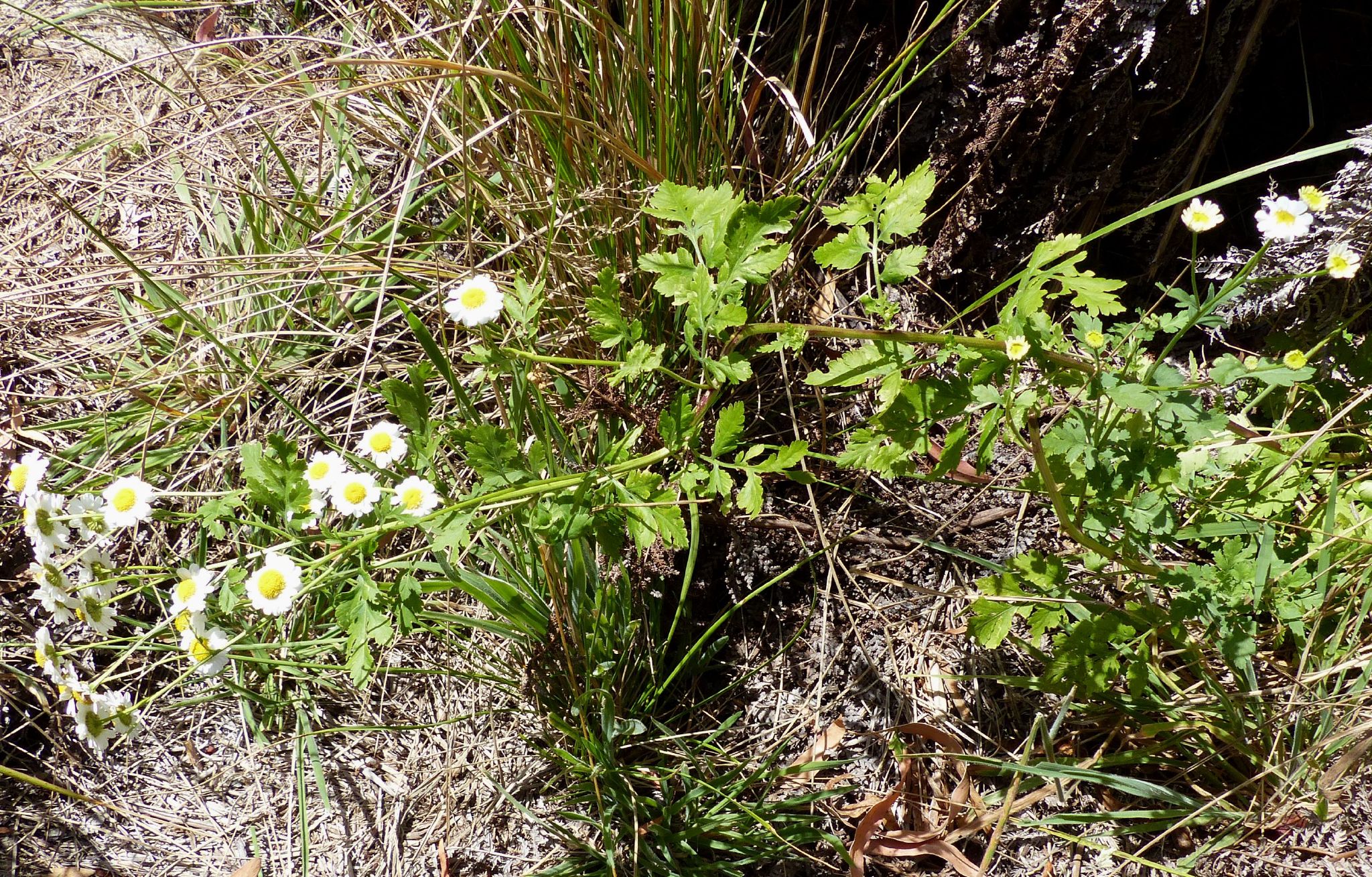
Medieval Latin tanazita (derived from the Greek athanasia) — immortality, as T. vulgare is used as a medicinal herb as well as in funeral winding sheets.
Perennial or rarely annual herbs, seldom subshrubs, mostly aromatic, glabrous to hairy. Stems prostrate, ascending or erect, simple or branched. Leaves basal and/or along stems, alternate, margins entire or toothed, or more often lobed or divided, sessile or petiolate. Capitula radiate, diskiform or diskoid, terminal, solitary or in corymbs, with stalks. Involucral bracts in 3 rows, overlapping, unequal,margins sometimes brown. Receptacle flat or convex. Ray florets female or sterile, often ligulate, yellow, pink or white. Disk florets bisexual, tubular or filiform, yellow. Achenes oblong, compressed, 5-12-ribbed, often glandular. Pappus a crown, short scales or rarely absent.
Two species have become weakly naturalised in Australia.
Mostly aromatic plants with lobed or divided leaves; pappus usually a crown.
About 150 species from Europe, Asia, North Africa and North America.
Bremer & Humphries (1993).
Source: (2002). Dahlia. In: . Horticultural Flora of South-eastern Australia. Volume 4. Flowering plants. Dicotyledons. Part 3. The identification of garden and cultivated plants. University of New South Wales Press.
